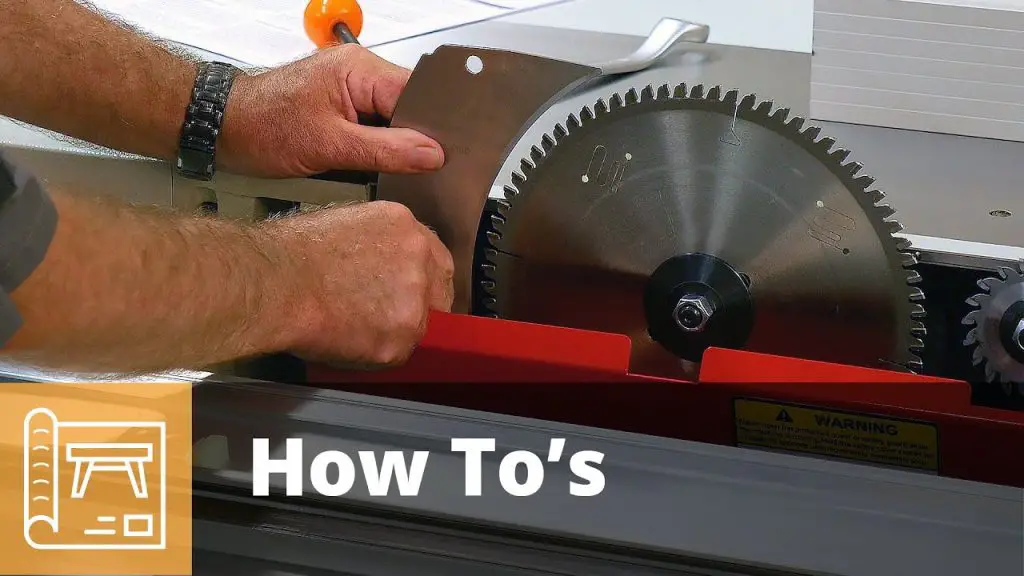How Important Is A Riving Knife? When it comes to woodworking, safety is of utmost importance. A riving knife is one tool that can significantly improve safety and the quality of cuts. This blog post will explain a riving knife, why it is essential, and how to use it safely.
What is a riving knife?
A riving knife is a safety feature attached to a table saw. It is a flat metal plate that sits behind the saw blade and moves up and down with the blade. Its purpose is to prevent the workpiece from binding or catching on the blade and causing kickback. It also helps to maintain a consistent gap between the blade and the workpiece, preventing the wood from burning.
Why is a riving knife essential?
Reduces kickback: Kickback is a common cause of table saw injuries. A riving knife helps prevent kickback by keeping the workpiece from getting trapped between the blade and fence. This reduces the risk of the wood catching on the blade and being thrown back at the operator.
Protects fingers and hands: A riving knife helps to keep the wood from pinching the blade, which can cause the operator’s fingers or hands to be pulled into the blade.
Quality of cuts
Prevents binding and burning: A riving knife helps to prevent the wood from binding or pinching the blade, which can cause the wood to burn and produce an uneven cut.
Improves accuracy: By keeping the gap between the blade and workpiece consistent, a riving knife helps to ensure that the cut is straight and accurate.
Maintenance and repair:
Reduces wear and tear on saw blades: A riving knife helps to reduce the amount of strain on the saw blade, reducing wear and tear and prolonging the blade’s life.
Increases the lifespan of the saw: By reducing the risk of kickback and other accidents, a riving knife helps to prevent damage to the saw, extending its lifespan.
The Truth About Riving Knives
Types of riving knives
Fixed riving knives: Fixed riving knives are attached to the saw and move up and down with the blade. They are usually attached to the saw’s throat plate and are adjusted manually.
Split riving knives: Split riving knives are similar to fixed riving knives but have two pieces that can be adjusted independently.
Aftermarket riving knives: Aftermarket riving knives can be purchased separately and attached to older saw models that do not have them built-in.
Compatibility with different saw models: It is essential to check the compatibility of the riving knife with the saw model to ensure it fits properly and works effectively.
How to use a riving knife safely
Proper installation and adjustment: A riving knife should be installed and adjusted correctly to work effectively. Always refer to the manufacturer’s instructions for installation and adjustment.
Maintenance and cleaning: Regular maintenance and cleaning of the riving knife will ensure that it continues to work effectively and prolong its lifespan.
Tips for using a riving knife: Always use a riving knife when using a table saw. Keep the blade and riving knife appropriately aligned, and never remove the riving knife while the saw is in use.
What are the differences between fixed, split, and aftermarket riving knives?
Fixed, split, and aftermarket riving knives are all designed to improve safety and the quality of cuts when using a table saw. However, their construction, adjustability, and compatibility differ with different saw models. Here are some of the key differences:
Fixed Riving Knives
Fixed riving knives are attached to the saw and move up and down with the blade. They are usually attached to the saw’s throat plate and are adjusted manually. Fixed riving knives are the most common on many newer saw models. They are typically adjustable for height but not for lateral movement. Fixed riving knives are generally compatible only with saws designed to accommodate them.
Split Riving Knives
Split riving knives are similar to fixed riving knives. Still, they have two pieces that can be adjusted independently. This allows for greater flexibility in adjusting the riving knife to the thickness of the workpiece. Split riving knives are generally more expensive than fixed ones but provide greater precision and control over the cut. They are also compatible only with saws that are designed to accommodate them.
Aftermarket Riving Knives
Aftermarket riving knives can be purchased separately and attached to older saw models that do not have them built-in. They are typically adjustable for height and lateral movement. They can be a good option for those with an older saw model who want to upgrade to a riving knife. However, aftermarket riving knives may not fit all saw models, so it is essential to check compatibility before purchasing.
Riving Knife Vs Blade Guard
A riving knife and a blade guard are both safety features in table saws. The main difference between them is their function and the level of protection they provide.
A riving knife is a thin blade mounted behind the saw blade that helps to prevent kickback by keeping the wood being cut steady and aligned. It allows for making cuts without having to remove the blade guard, which can be a time-consuming process.

Credit: www.reddit.com
Will a Riving Knife Prevent Kickback?
Yes, a riving knife is designed to help prevent kickback in a table saw. Kickback occurs when the wood being cut suddenly jumps back towards the user and can be dangerous. A riving knife works by preventing the wood from closing in on the saw blade, which can cause kickback, and helps to keep the wood steady and aligned during the cut.
It is important to note that a riving knife is just one of several safety features that can help prevent kickback, and proper use and maintenance of the saw, as well as following recommended safety guidelines, are also important for reducing the risk of injury.
In conclusion, a riving knife can be an effective tool for helping to prevent kickback in a table saw, but it should always be used in conjunction with other safety measures and good saw practices.
Does a circular saw need a riving knife?
While a riving knife is not typically required for a circular saw, it can still be a helpful safety feature. Circular saws are typically used for crosscuts and rip cuts on smaller workpieces, and they are not as prone to kickback as table saws. However, kickback can still occur if the saw blade binds or catches on the workpiece, which can be dangerous and cause injury.
Some circular saws come with a built-in riving knife, while others do not. Suppose a circular saw does not have a riving knife. In that case, there are aftermarket options available that can be added to the saw. A riving knife for a circular saw can help prevent binding and kickback, resulting in safer and more accurate cuts.
That being said, it is essential to note that a riving knife is not a substitute for proper safety practices when using any saw. Always follow the manufacturer’s instructions for safe operation, wear appropriate safety gear, and use caution when cutting.
Conclusion
A riving knife is a safety device that is attached to the back of a circular saw. It helps to prevent kickback by keeping the blade from getting bound up in the workpiece. Kickback can occur when the blade becomes stuck in the material and is forced backward, which can cause serious injury to the operator.
A riving knife helps to prevent this by moving with the blade and allowing it to cut through the material without becoming stuck.

I’m John Carry, also known as a woodworker I have been a professional saw expert for over 10 years. I’d work with every type of saw machine out there, and experiment to find which tools work better.
I’m always looking for ways to improve my skills and help those around me. I love my job and am always happy to share my knowledge with others.


